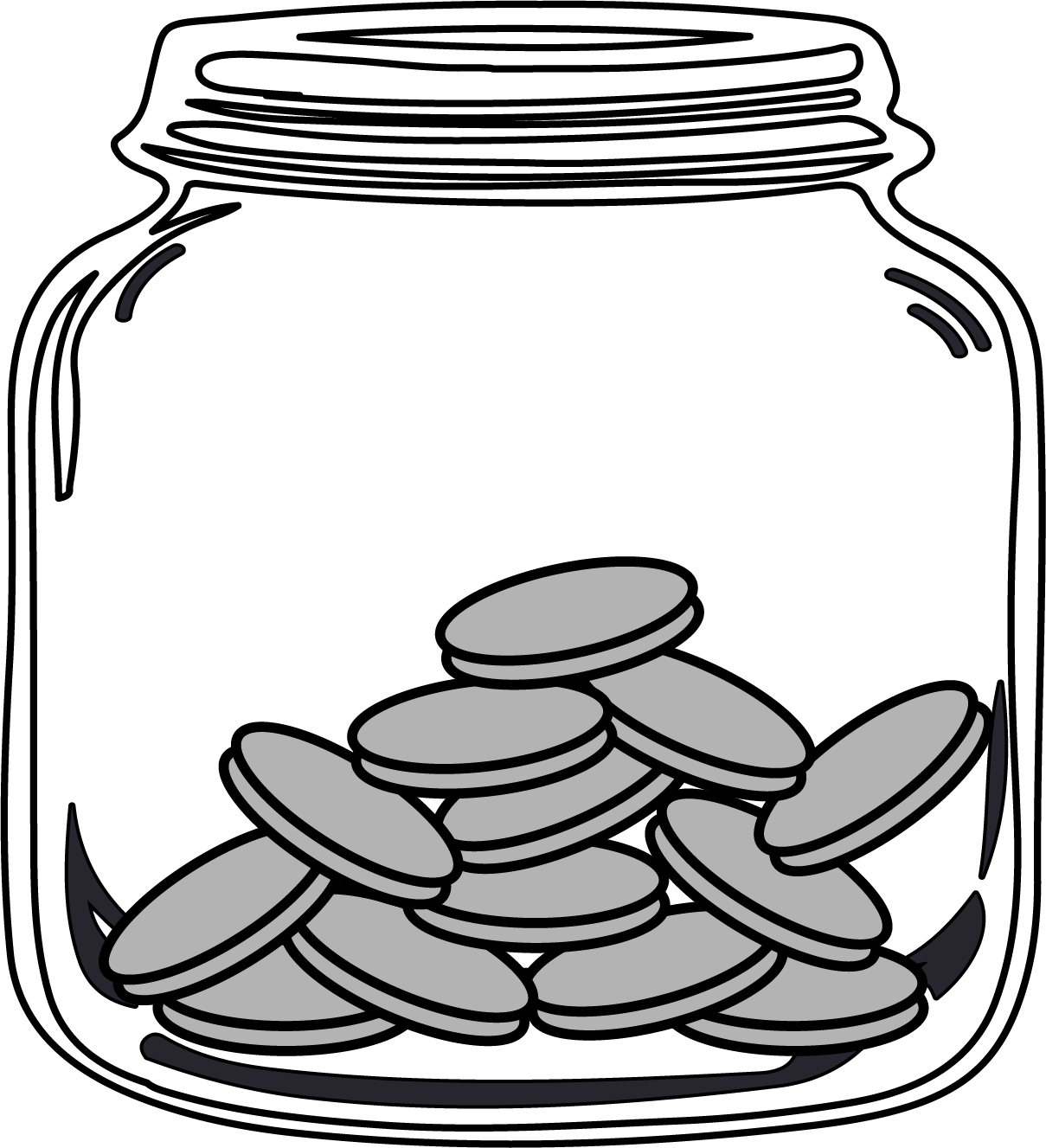

Inaaya has a jar of coins containing only nickels, dimes, and quarters. A nickel is worth \(5\) cents, a dime is worth \(10\) cents, a quarter is worth \(25\) cents, and a dollar is worth \(100\) cents.
The ratio of the number of quarters to the number of dimes to the number of nickels in the jar is \(9:3:1\). The total value of all the coins in the jar is \(\$18.20\). How many coins does Inaaya have in her jar?

Solution 1
Suppose the jar contained \(1\) nickel. Then, using the ratio \(9:3:1\), the jar would contain \(9\) quarters, \(3\) dimes, and \(1\) nickel, which is \(13\) coins in total. The value of the \(13\) coins would be \(25\times 9+10\times 3 + 5\times 1=260\) cents or \(\$2.60\).
Since the coins in the jar are in the ratio \(9:3:1\), then we can group the coins into sets of \(9\) quarters, \(3\) dimes, and \(1\) nickel, with each set containing \(13\) coins and having a value of \(\$2.60\).
Since the total value of the coins in the jar is \(\$18.20\) and \(\frac{\$18.20}{\$2.60}=7\), then there are \(7\) of these sets of coins. Since each set has \(13\) coins, then there is a total of \(7\times 13=91\) coins in the jar.
Solution 2
This solution uses algebra which may or may not be too advanced for the solver.
Suppose there are \(n\) nickels in the jar. Then, using the ratio \(9:3:1\), the jar would contain \(9n\) quarters, \(3n\) dimes, and \(n\) nickels, which is \(13n\) coins in total.
The value of the coins would be \[25\times 9n+10\times 3n+5\times n=225n+30n+5n=260n \text{ cents}\]
The total value of the coins in the jar is \(\$18.20\), or \(1820\) cents. Therefore, \[\begin{aligned} 260n&=1820\\ \frac{260n}{260}&=\frac{1820}{260}\\ n&=7\end{aligned}\] Since there are \(13n\) coins in the jar and \(n=7\), there is a total of \(13\times 7=91\) coins in the jar.
Solution 3
In this solution, we look at the possibilities for the number of nickels, and systematically increase the number of nickels until the conditions in the problem are satisfied with that number of nickels. This solution is presented in a table.
| Number of nickels | Number of quarters | Number of dimes | Number of coins | Total value of coins (in cents) |
|---|---|---|---|---|
| \(1\) | \(9\times 1=9\) | \(3\times 1=3\) | \(1+9+3=13\) | \(1\times 5+9\times 25+3\times 10=260\) |
| \(2\) | \(9\times 2=18\) | \(3\times 2=6\) | \(2+18+6=26\) | \(2\times 5+18\times 25+6\times 10=520\) |
| \(3\) | \(9\times 3=27\) | \(3\times 3=9\) | \(3+27+9=39\) | \(3\times 5+27\times 25+9\times 10=780\) |
| \(4\) | \(9\times 4=36\) | \(3\times 4=12\) | \(4+36+12=52\) | \(4\times 5+36\times 25+12\times 10=1040\) |
| \(5\) | \(9\times 5=45\) | \(3\times 5=15\) | \(5+45+15=65\) | \(5\times 5+45\times 25+15\times 10=1300\) |
| \(6\) | \(9\times 6=54\) | \(3\times 6=18\) | \(6+54+18=78\) | \(6\times 5+54\times 25+18\times 10=1560\) |
| \(7\) | \(9\times 7=63\) | \(3\times 7=21\) | \(7+63+21=91\) | \(7\times 5+63\times 25+21\times 10=1820\) |
From the table, we see that there is a total of \(91\) coins in the jar.